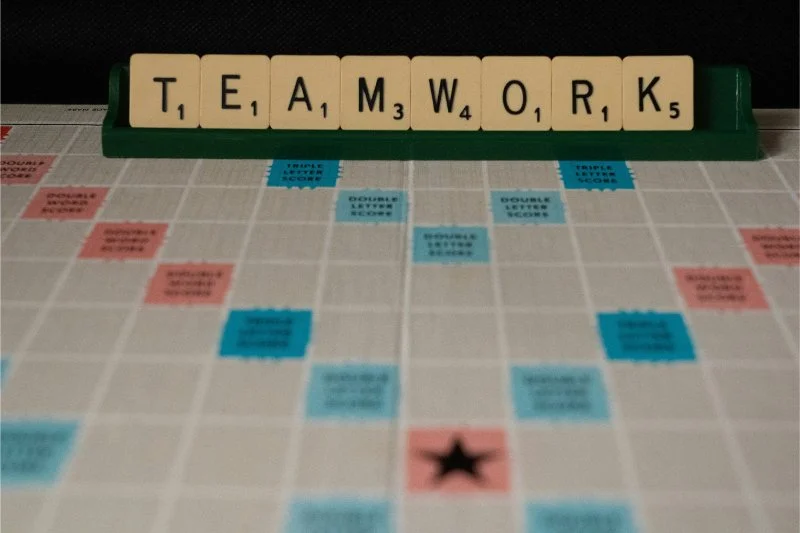The Power of Play: How School Leaders Can Build Stronger Teams and Improve Culture
We often think of play as something reserved for children—a time for recess, laughter, and creativity. But what if I told you that the power of play is just as essential for school leaders?
As an educator and administrator, I’ve learned that play isn’t just about fun—it’s about building relationships, fostering creativity, and improving school culture. When leaders embrace the power of play, they create an environment where teachers feel engaged, teams collaborate more effectively, and students benefit from a positive, energized school community.
Over the years, I’ve seen firsthand how play can transform leadership. Whether it’s through team-building exercises, creative brainstorming sessions, or simply making space for joy, playing helps break down barriers and strengthen connections in ways that traditional leadership strategies can’t.
In this post, I’ll break down why the power of play is a critical leadership tool, how it enhances teamwork and school culture, and actionable ways to integrate it into daily routines.
The Power of Play in Leadership: More Than Just Fun
For many, leadership and play don’t seem like they belong in the same conversation. But research shows that incorporating play into the workplace leads to higher job satisfaction, stronger teams, and increased innovation.
In the business world, companies like Google and Pixar have long recognized the role of play in creativity and team dynamics. Schools, in many ways, function the same way as businesses—leaders must engage their staff, inspire their teams, and create an environment where people thrive.
The power of play in leadership isn’t just about having fun; it’s about:
Strengthening Team Bonds: When staff members engage in play, whether through team-building activities or informal moments of joy, it fosters trust and camaraderie.
Boosting Creativity & Problem-Solving: Play encourages out-of-the-box thinking, which is critical for solving challenges in education.
Reducing Stress & Preventing Burnout: Educators face high levels of stress. Incorporating play into professional development or staff meetings can help create a sense of balance.
Enhancing School Culture: A school where leaders embrace play is often more collaborative, energized, and student-centered.
Play and Team Building: How School Leaders Can Foster Stronger Connections
One of the greatest challenges in education today is building strong, connected teams that work together toward a shared vision. When staff members feel disconnected or unsupported, collaboration suffers, and student outcomes are impacted.
This is where the power of play comes in. Play has a unique ability to bring people together, break down walls, and create a culture of trust. I’ve seen this firsthand in my work with schools—when leaders encourage play, staff morale improves, and relationships strengthen.
How School Leaders Can Use the Power of Play to Strengthen Teams
1. Start Staff Meetings with a Playful Icebreaker
Instead of diving straight into logistics, kick off meetings with a lighthearted game, a creative challenge, or even a quick round of trivia.
This helps set a positive tone and creates an atmosphere where teachers feel more comfortable sharing ideas.
2. Incorporate Movement and Active Engagement
Sitting in meetings for long hours can drain energy and focus.
Try walking meetings, standing brainstorm sessions, or team-building activities that get people moving.
3. Encourage Friendly Competition
Small, friendly competitions can energize teams and foster motivation.
Whether it’s a classroom decorating contest, a staff dodgeball game, or a “guess the baby picture” challenge, competition brings people together in a fun way.
The Power of Play in School Culture: Creating a Positive Environment for Educators and Students
A school’s culture directly impacts teacher retention, student success, and overall satisfaction within the community. Leaders who embrace the power of play in their schools foster an inclusive, innovative, and supportive environment.
Ways to Cultivate a Playful and Engaging School Culture:
1. Encourage Play-Based Learning for Students
Teachers and school leaders should model play-based learning by incorporating hands-on activities, creative projects, and experiential learning opportunities.
When students see that learning is engaging and enjoyable, they are more likely to participate.
2. Celebrate Small Wins and Milestones
Recognizing achievements—big or small—keeps motivation high.
Whether it’s celebrating staff birthdays, work anniversaries, or classroom successes, adding playful moments to these celebrations fosters a sense of community.
3. Make Professional Development More Engaging
Instead of traditional lecture-style PD sessions, incorporate interactive activities, storytelling, and team-building games to encourage participation and retention.
Research shows that when people enjoy the learning process, they retain information better.
4. Support Creativity and Innovation Among Staff
Allow teachers and staff to experiment, try new ideas, and take creative risks in a judgment-free environment.
Play fosters innovation, leading to new teaching strategies, problem-solving approaches, and school-wide initiatives.
Leading with Play
Recently, I took a staycation trip with my children and their spouses. While we originally planned for a trip to Tuscany, life had different plans (two grandbabies on the way!). Instead, we pivoted and spent time together at West Baden Resort.
What made the trip special wasn’t the location—it was the quality time spent playing games, laughing, and reconnecting. Whether it was bowling, board games, golf, or even video games, every moment reminded me that play isn’t just for kids. It’s essential for all of us.
This experience reinforced an important lesson: the power of play strengthens relationships, reduces stress, and reminds us not to take life too seriously. The same is true in school leadership. When we create space for joy, connection, and creativity, we build stronger teams and better learning environments.
Final Thoughts: Why School Leaders Should Prioritize The Power of Play
Play is not a luxury—it’s a necessity. It enhances leadership, strengthens teams, and creates a positive, engaging school culture.
When leaders embrace play, they:
Foster trust and collaboration among staff
Improve creativity and problem-solving
Build a joyful and resilient school culture
Enhance student learning and engagement
At Bower Consulting, we help school leaders create environments where play is not just encouraged—it’s embraced as a tool for growth.
If this resonates with you, let’s connect. I’d love to discuss how your school can partner with Bower Consulting to create stronger teams, improve school culture, and secure funding for meaningful initiatives.



